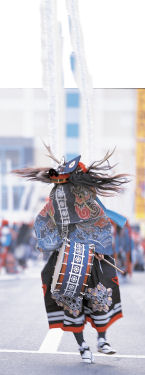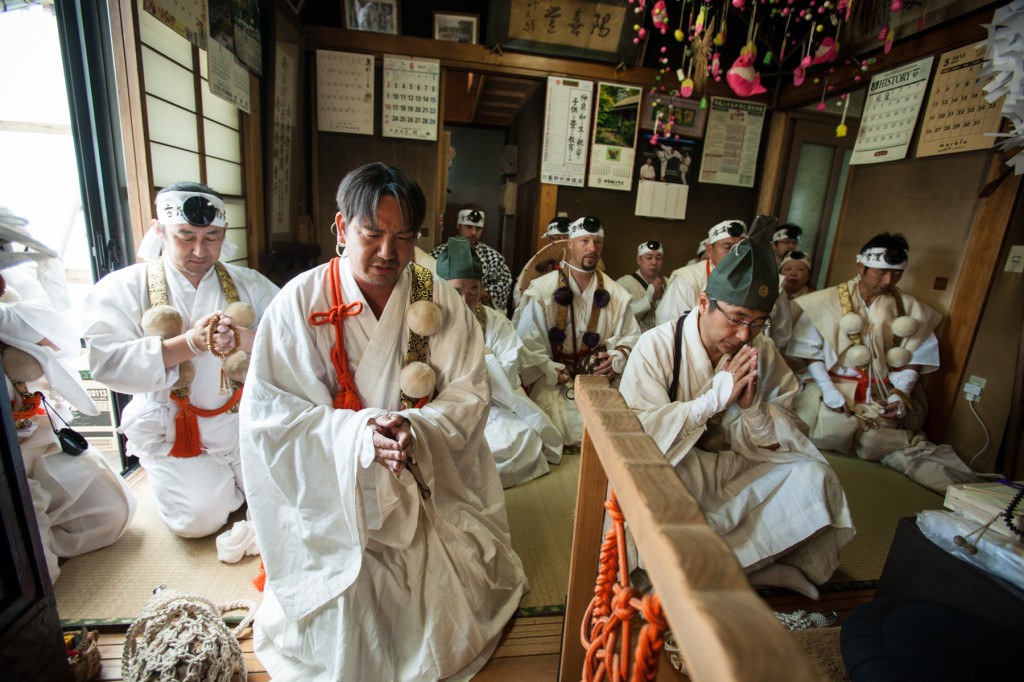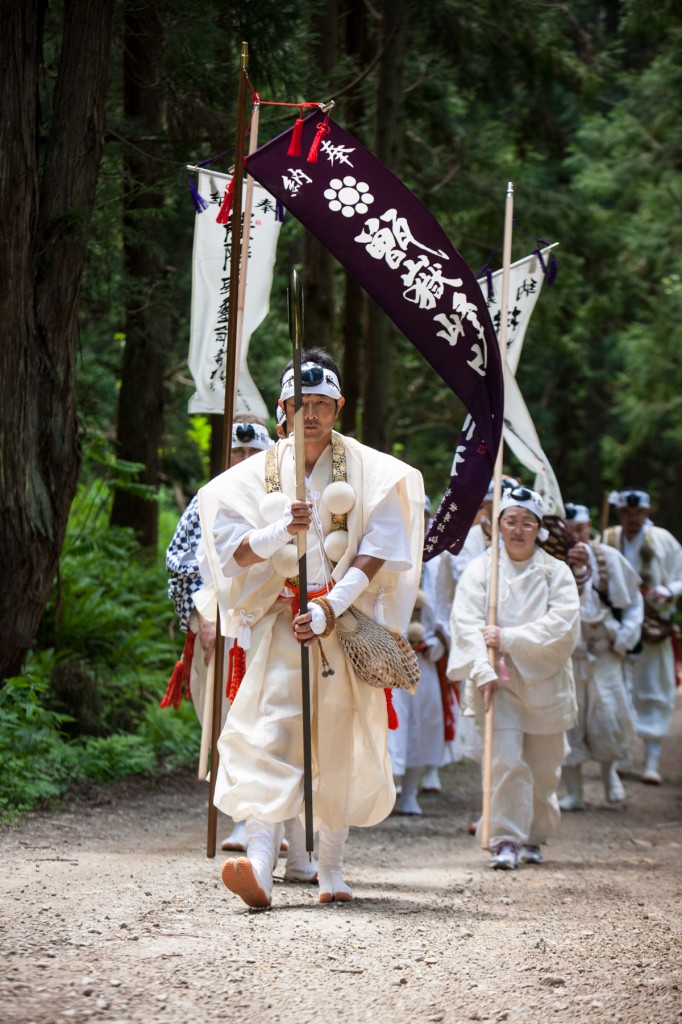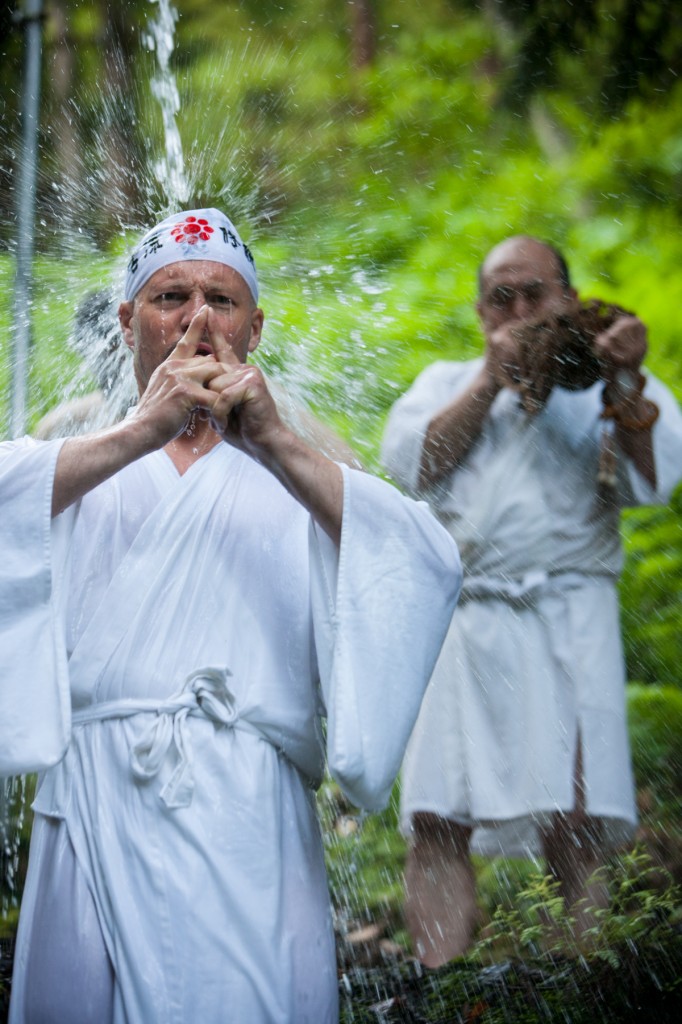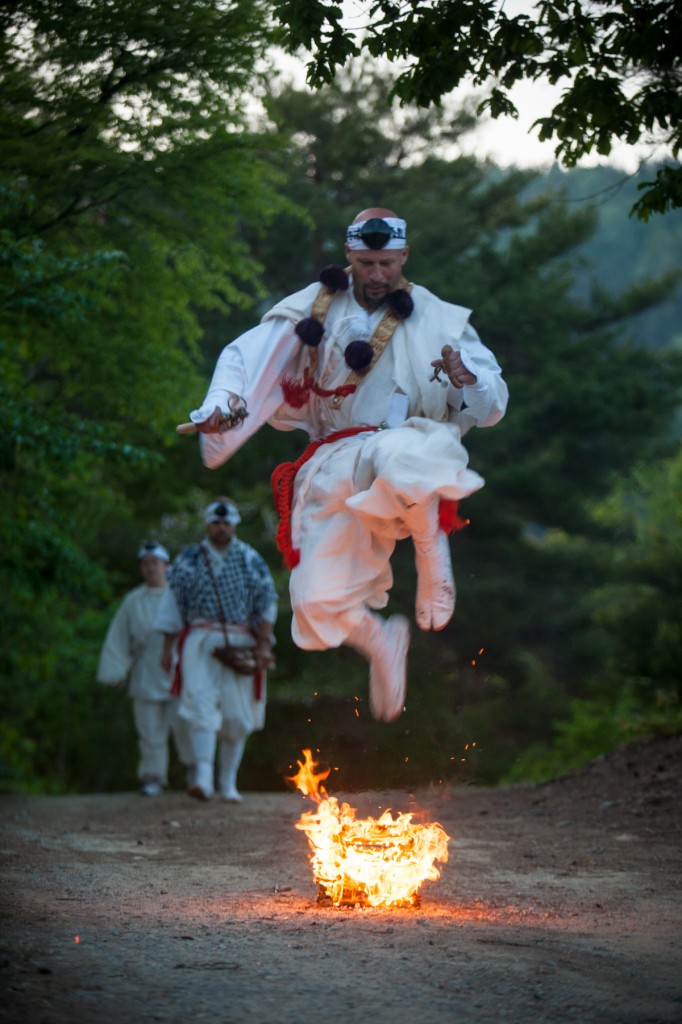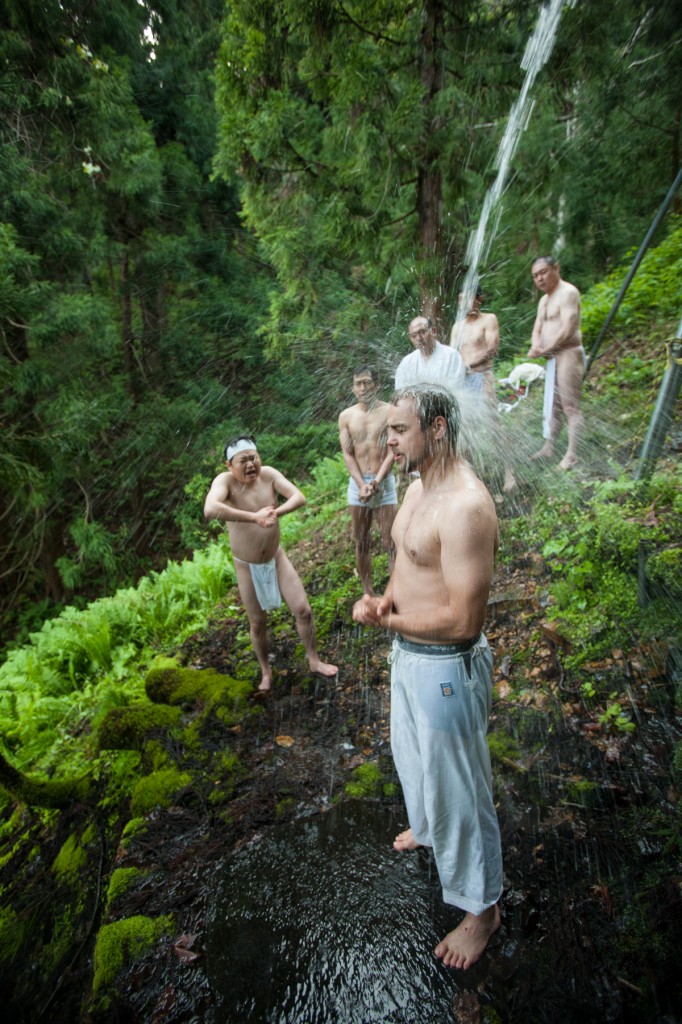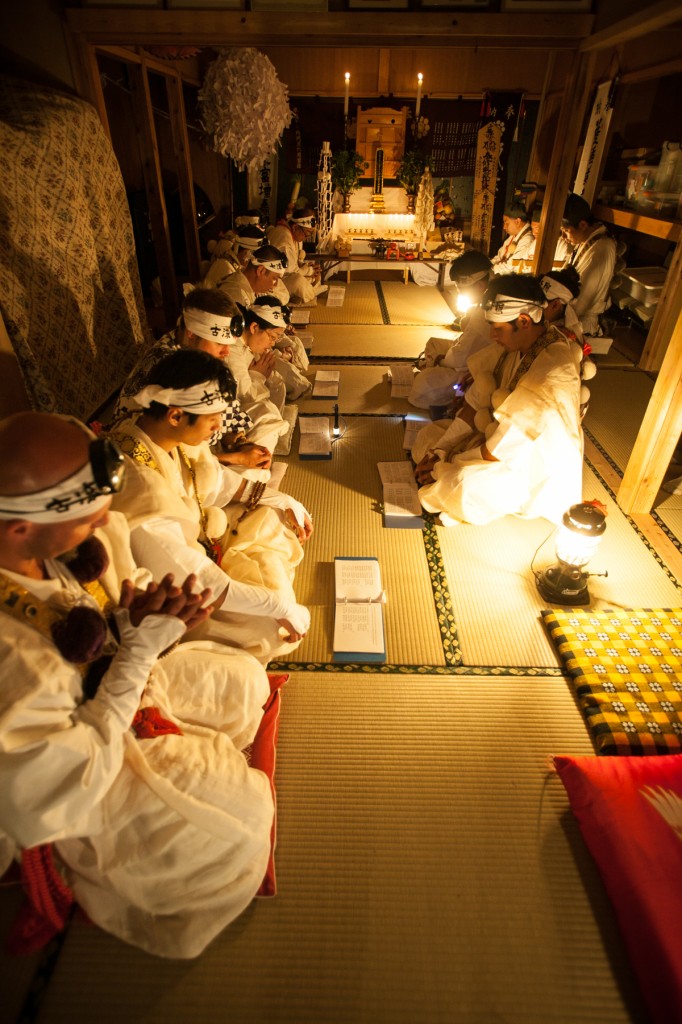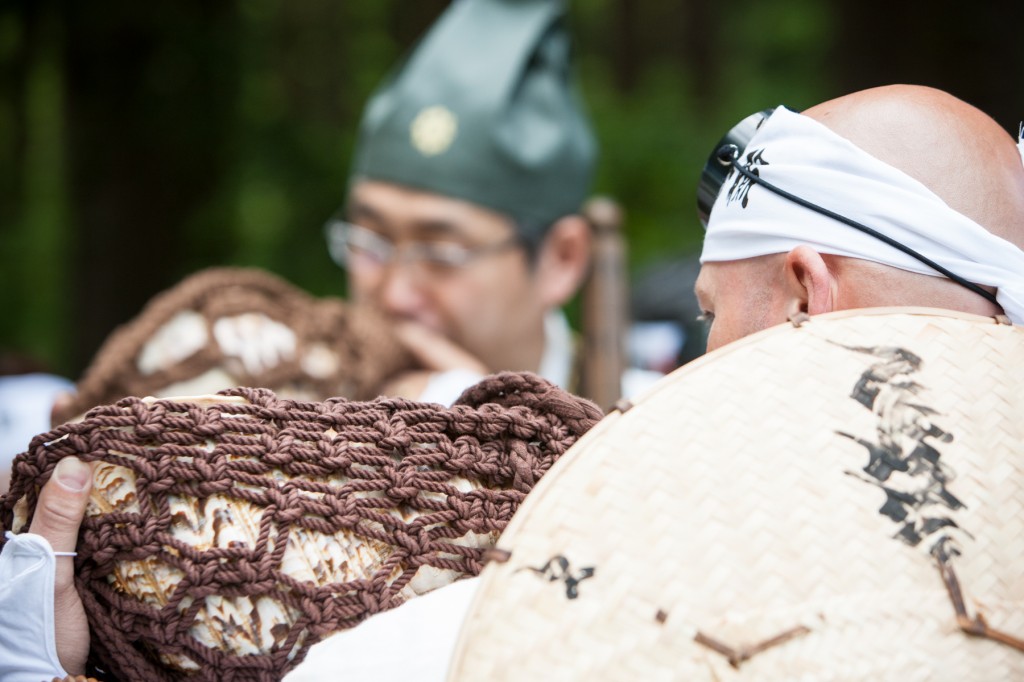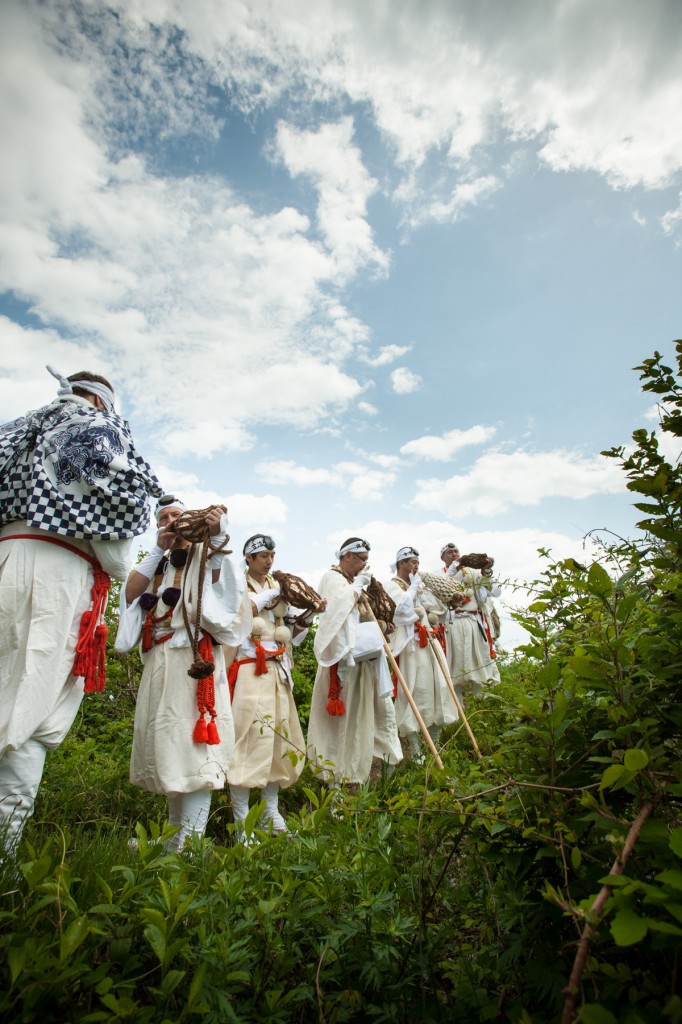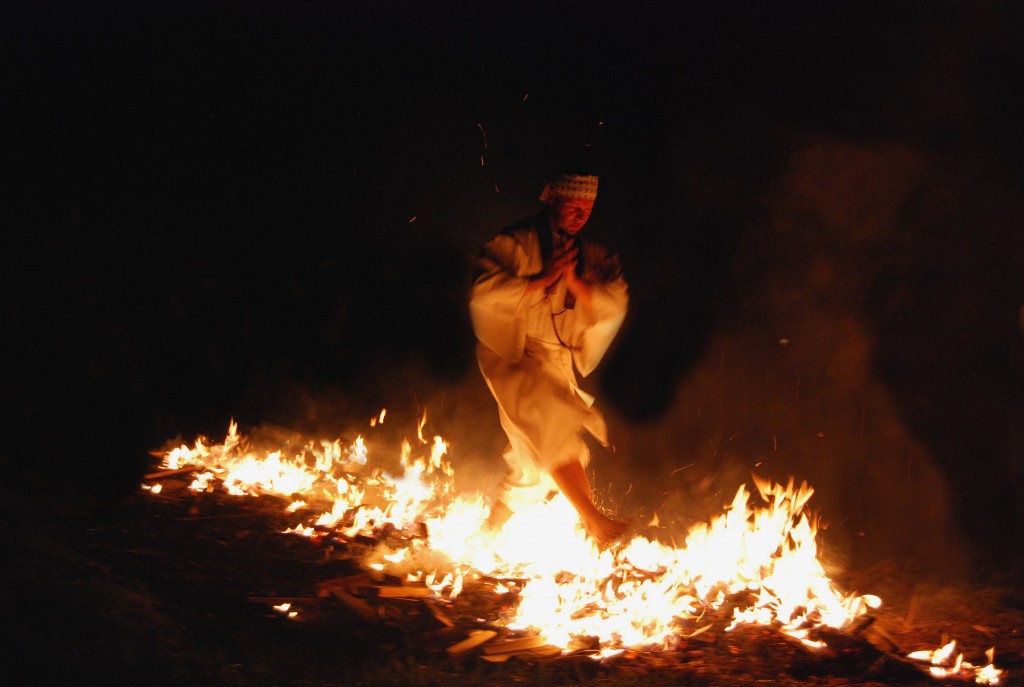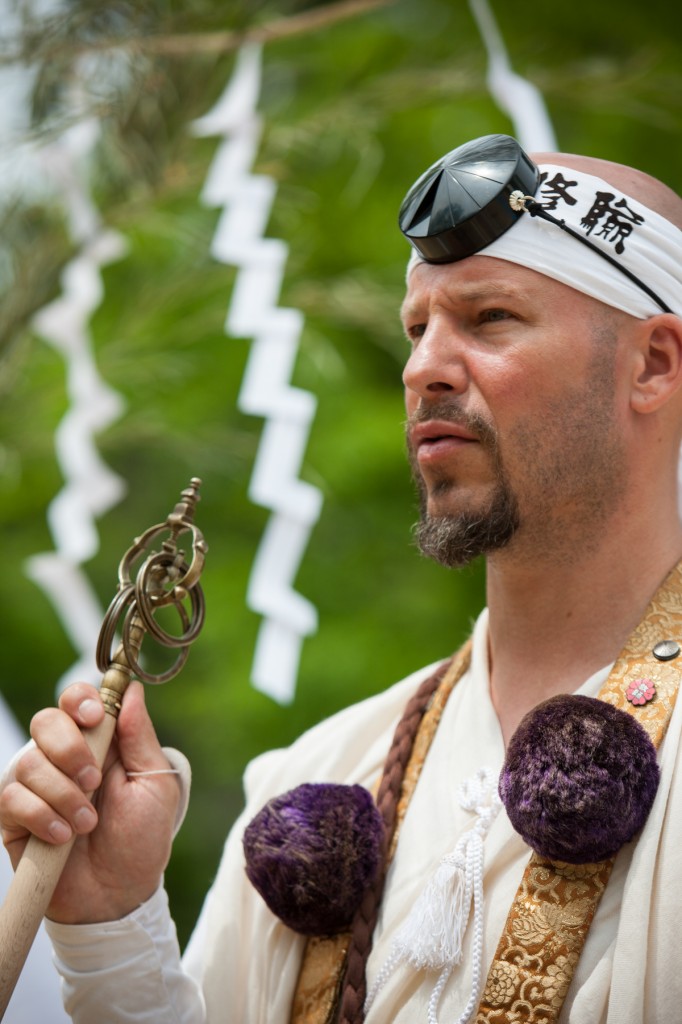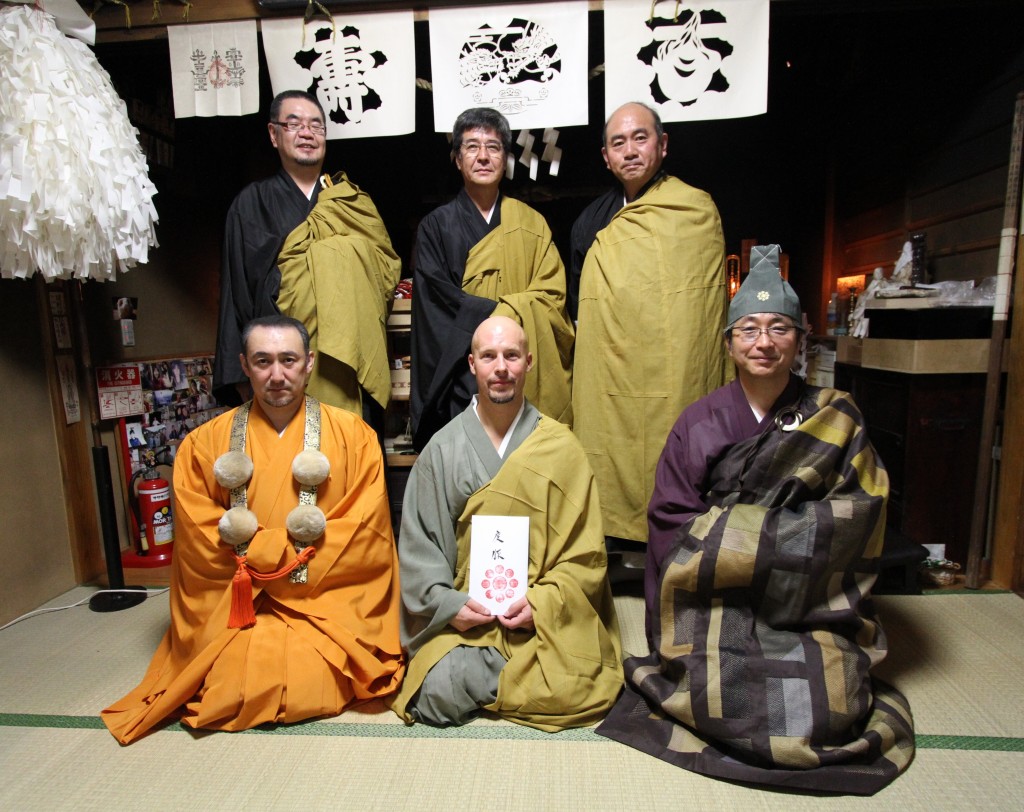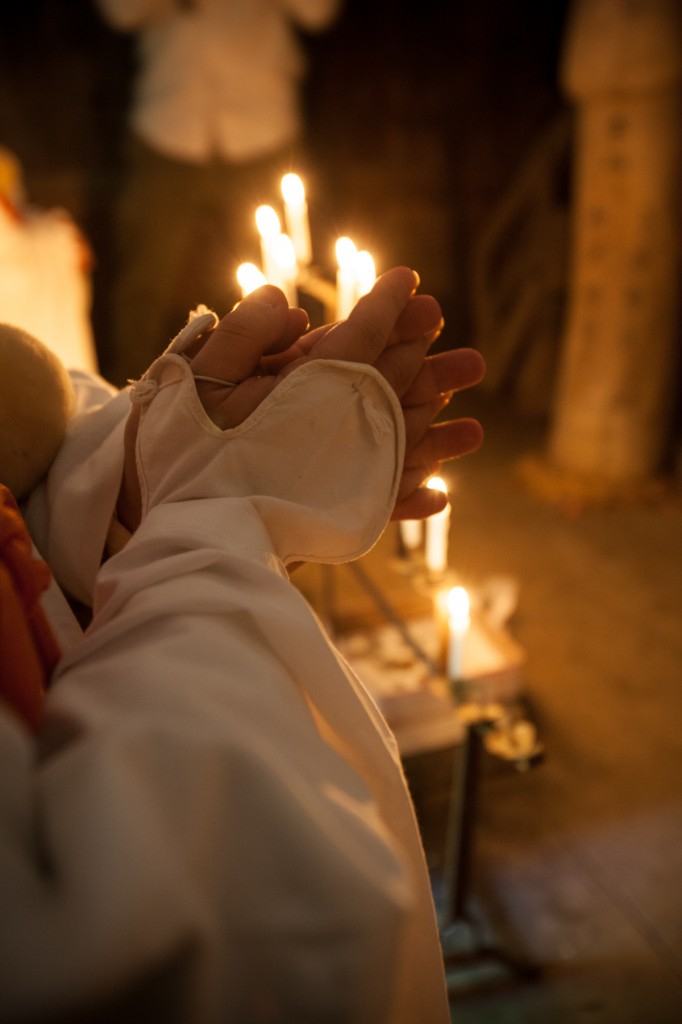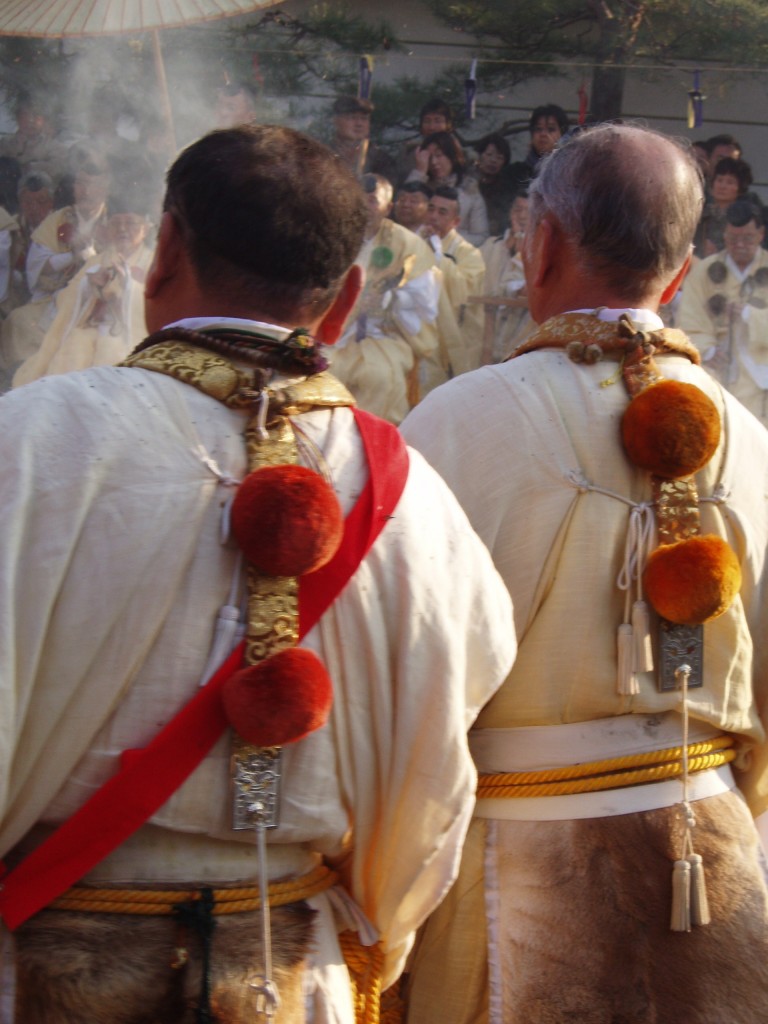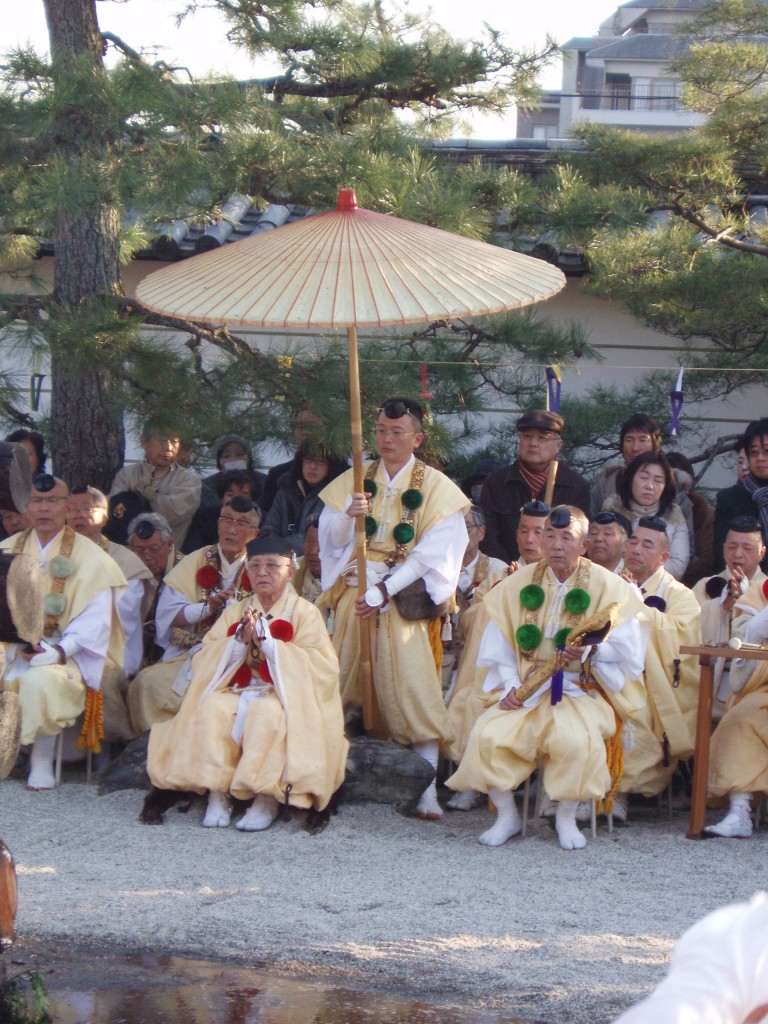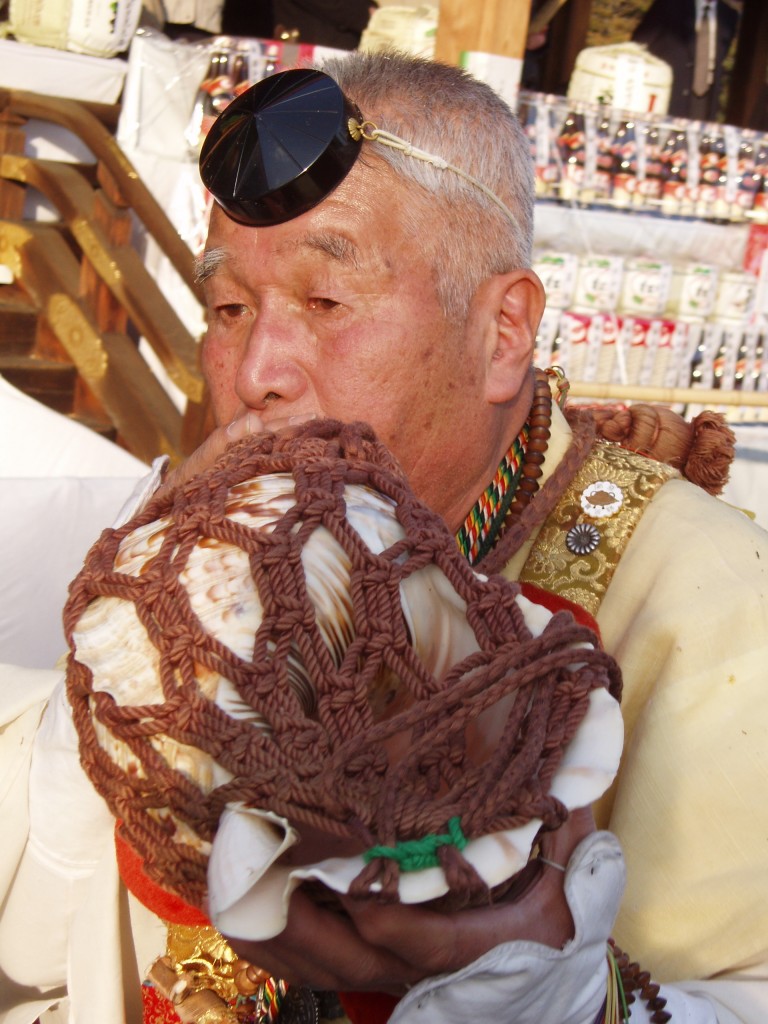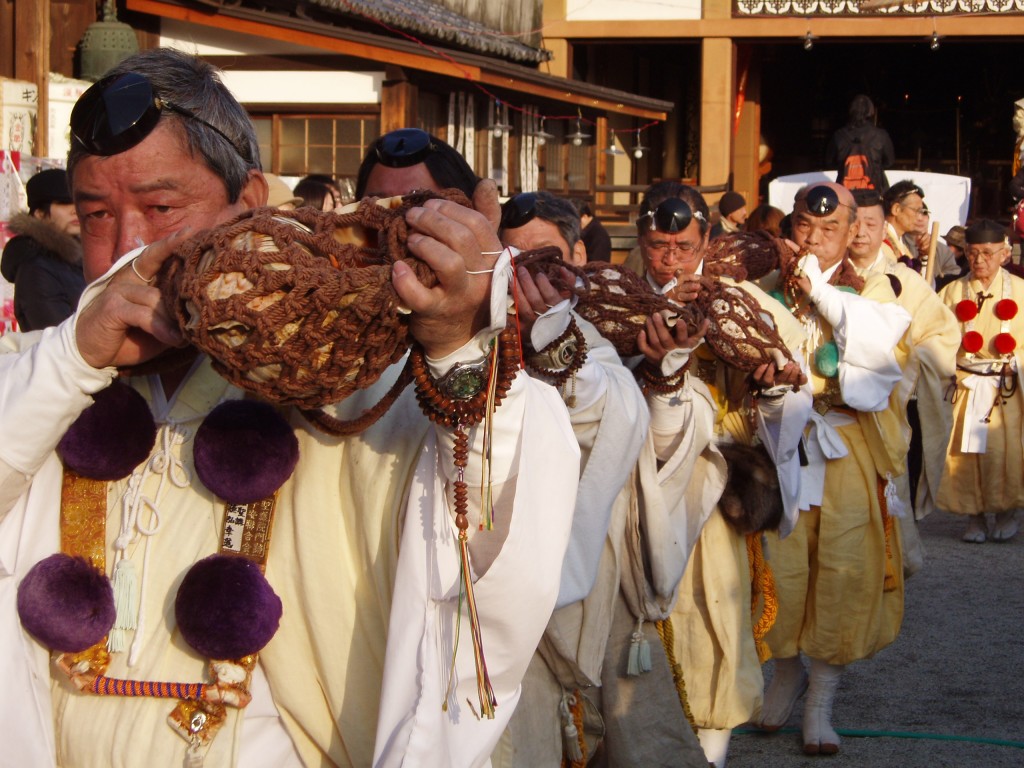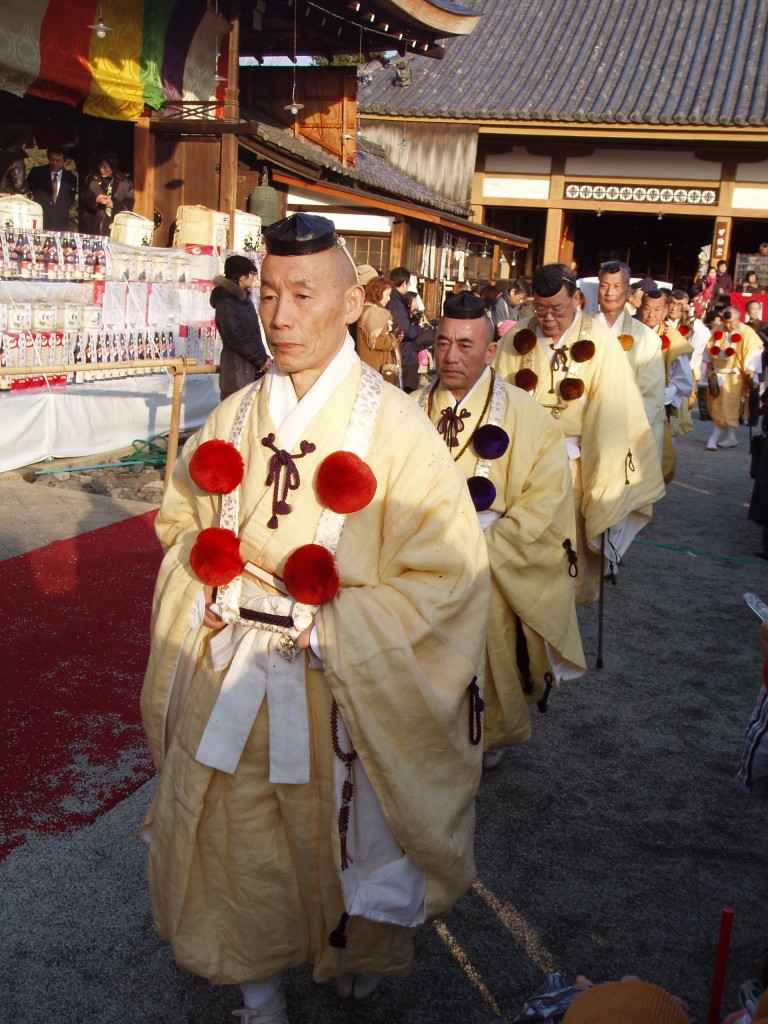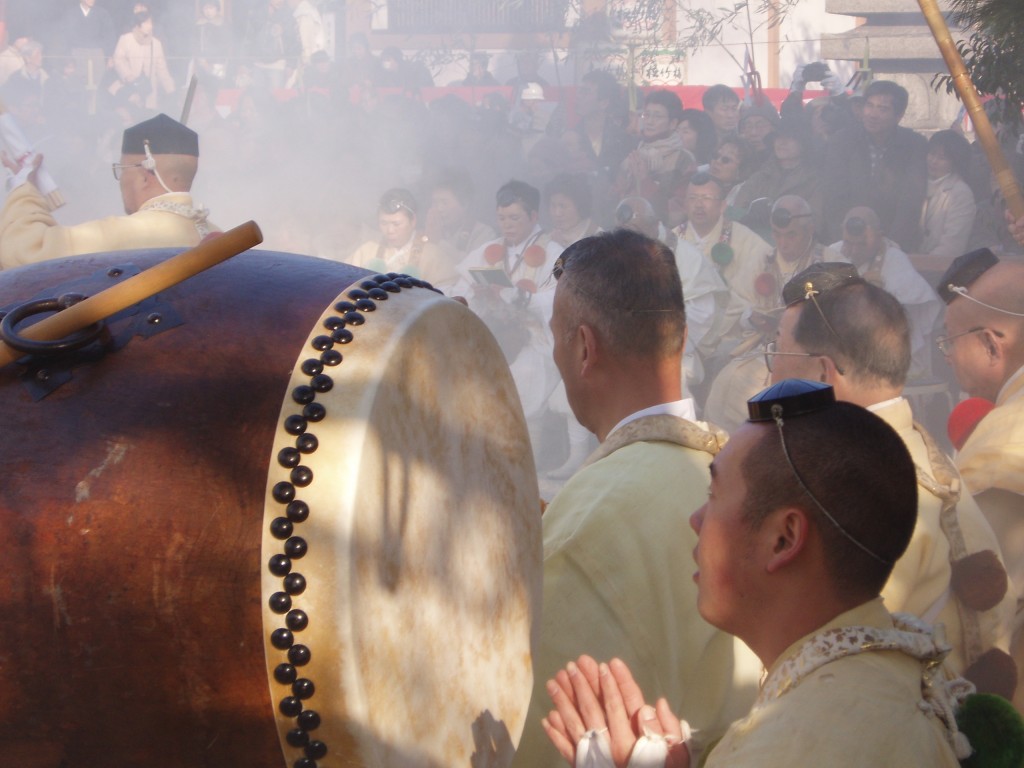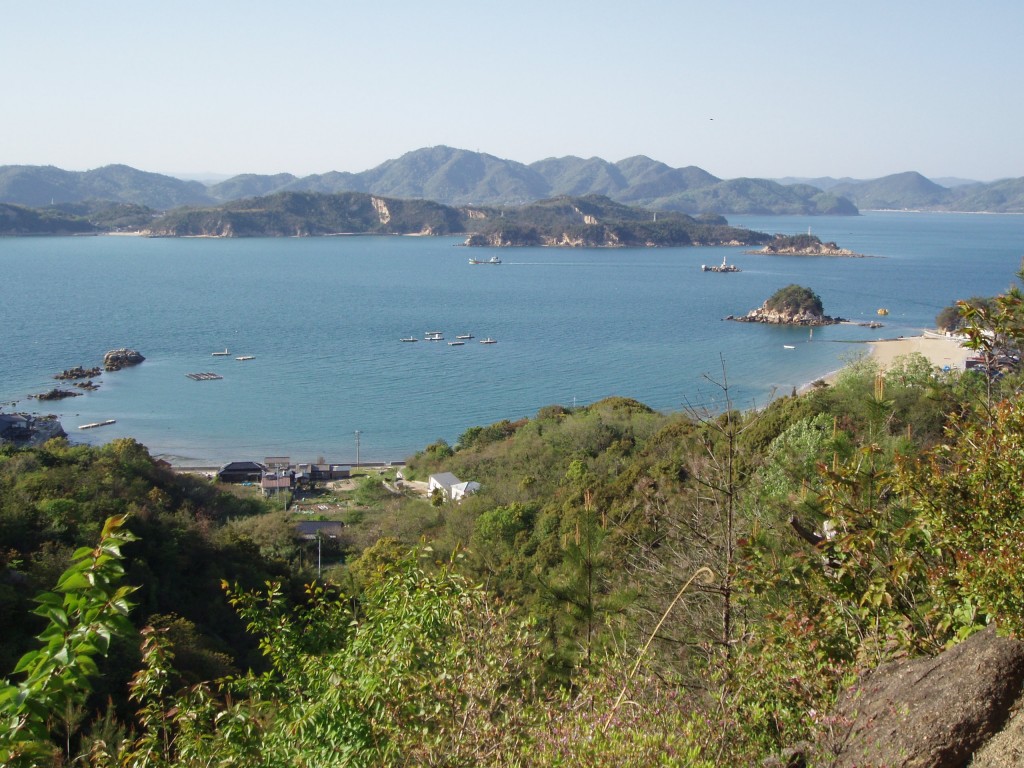
View from Shiraishi Island over the Inland Sea (Okayama Prefecture)
Nice article today in the Japan Times by friend Amy Chavez, who writes of the mini 88-pilgrimage on her Inland Sea island of Shiraishi. I’m a huge fan of the island and have spent happy times there. I’ve also done several parts of the trail, which for a small island is surprisingly lengthy. (For my take on Shraishi, see here.)
Though the trail belongs to the Shingon sect of Buddhism, it’s syncretic in nature and many of the shrines have Shinto-style shide (paper strips), sakaki or other Shinto trappings. The founder of Shingon, Kukai, recognised the existence of kami, and the founding myth of his headquarters at Koya involves the mountain’s kami (as described here).
Amy’s article highlights the problem of rural areas in keeping up traditional ways. Some of these are immemorial and recall a way of life dating back some 2000 years which was based on the agricultural cycle of wet-rice cultivation. For many ancient practices, it may sadly be the end of the line as depopulation and an aging society take their toll.
*********************************************************
The ancient pilgrimage routes and the local community
BY AMY CHAVEZ SEP 20, 2013 Japan Times
As I headed out the door to do some trail running in the national park behind my house, I was surprised to make it only a few hundred meters before I was stopped dead in my tracks. The dead part was a tree that had fallen over the trail over a month ago and had yet to be removed. No problem. I went back home, got a hand saw, cut up the tree and cleared the trail. Now run!
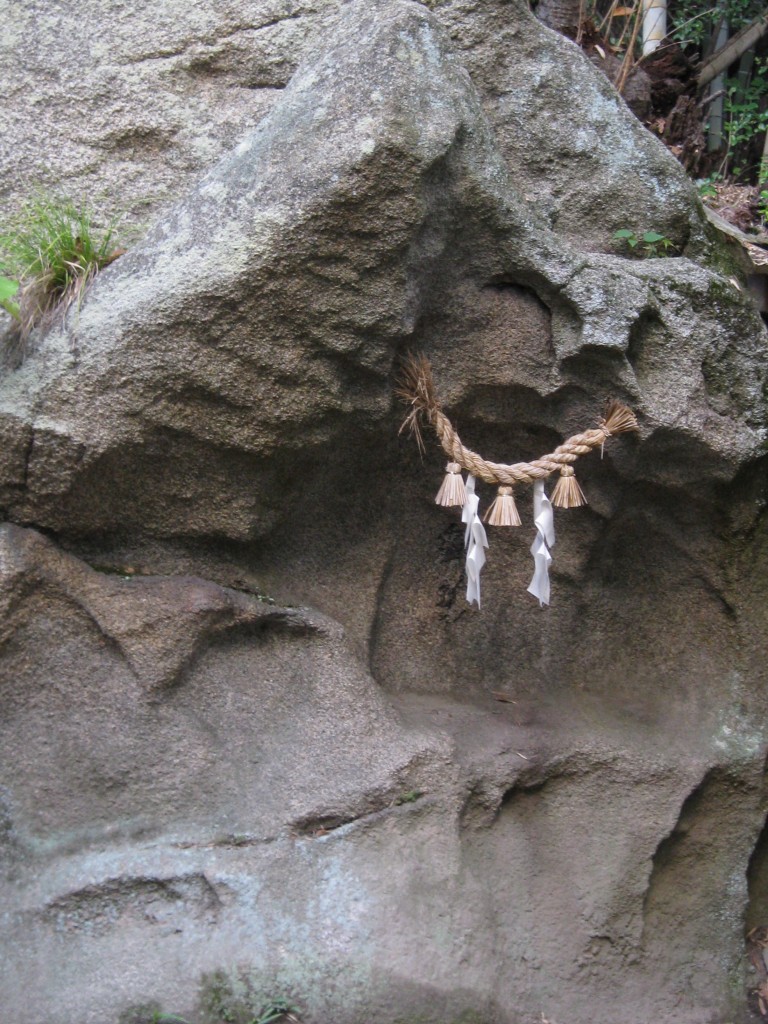
The Fudo-myoo rock on Shiraishi island
A few hundred meters on, I was stopped again. Another tree down! I went home again, got the saw, cut up the tree and cleared the trail. Each tree removal took about 30 minutes. Now run!
But the rest of the trail was in no better condition. More trees and branches were strewn over the path, some of the debris more recent than the others. Some branches had even already been hacked in two by passersby to make the trail more passable. Yet other sections of the trail were completely overgrown with weeds.
But this is no ordinary nature trail. It’s the 7 km Shiriaihi Buddhist Pilgrimage route, which takes you around the island through forests, past 88 designated sacred sites on the island. Each site has a small stone statue of Kobo Daishi accompanied by another stone deity. Each shrine has its own history and meaning, based on the famous 88-temple Shikoku Pilgrimage.
So why is the trail — in a national park no less — in such poor condition? What happened? What we’re witnessing is the slow, painful death of an island community.
Ever since I moved here in 1997, I’ve taken part in the pilgrimage cleanups that happen twice a year: once in the spring and once in the fall. Each of the eight neighborhoods on the island is in charge of a swath of the pilgrimage route. Our neighborhood, in charge of sites 10 to 17, has a dozen or so people who participate in this “obligatory volunteer” activity. In other words, you’re expected to take part unless you are either bed-ridden or dead.
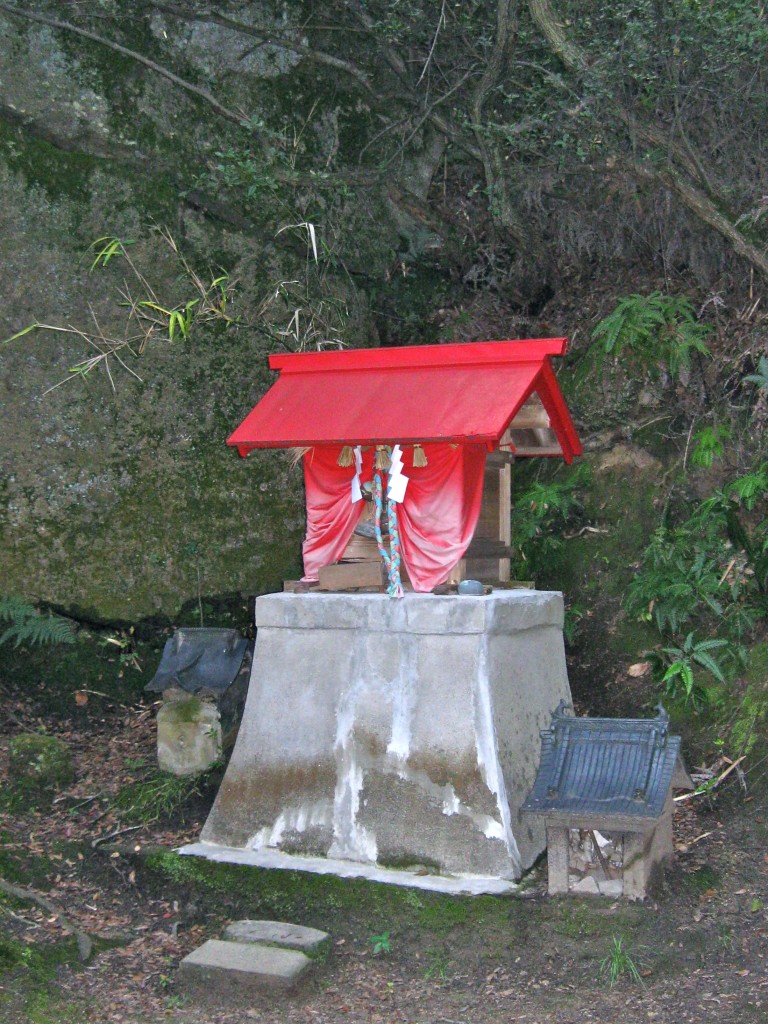
An unusually brightly coloured shrine on the pilgrimage
Indeed, I’ve always been fascinated at how agile and strong my elderly neighbors are. Rikimatsu-san, for example, an 80-year-old retired fisherman, climbs up and down the steep trails with no problem at all — while operating a gasoline-powered weed eater! The not-so-nimble (and there are only a few) attack the trails with rakes, hand saws and that all-round marvel tool, the Japanese scythe.
Basically, anything in the way gets cleared by the mad elderly brigade! Then there is my husband and I, as well as a few other young couples in our neighborhood, who also do our part. Not only that, but the younger couples have children who are almost in their teens — certainly old enough to pitch in. At the end of a typical three-hour cleanup, drinks and snacks were served and we’d all sit around and have a bit of a social hour.
So when spring came around again this year, I was looking forward to our spring cleanup. “Ladies and gentleman, sharpen your scythes!”
But when I talked to my neighbor Kazu-chan, she said, “Oh, we’re not doing it anymore. Everyone is too old.” Um, we are? Have I hyper-aged to the point that at 50, I can no longer decapitate weeds with a scythe? Had this age epidemic affected the other young couples in the neighborhood, too?
But it gets worse. Not just our neighborhood, but all the neighborhoods have pulled out of the cleanup. In one of those typically Japanese “all or none” decisions, rather than just take the pressure off the elderly to participate, they canceled the entire activity! And now, just a few months later, a 400-year-old pilgrimage path is impassable.
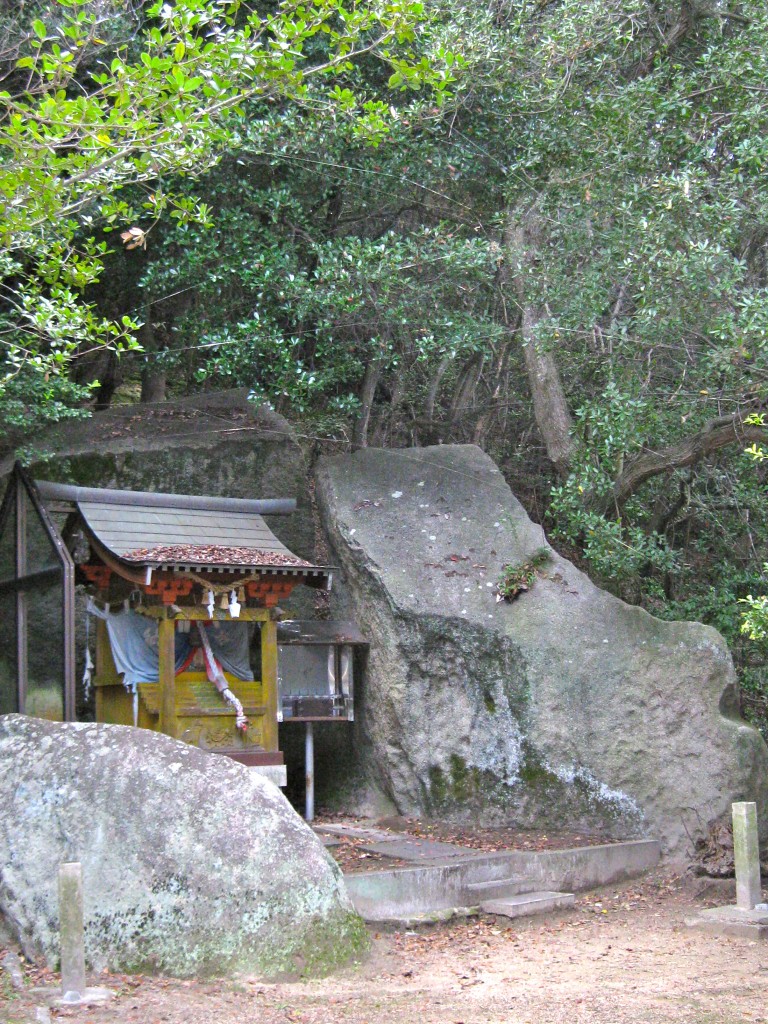
Another of the 88 shrines on the pilgrimage trail, neatly tucked between rocks
While I understand that some of our island’s ancient Buddhist and Shinto ceremonies will die because there are no young people to carry them on, I never imagined we’d give up on a path through the mountains that merely needs a few hours of cleaning once in the spring and once in the fall. I apologized to Mother Nature for this wholesale abandonment of her gifts.
Many tourists have commented that the Shiraishi Pilgrimage impresses on a level that the Shikoku Pilgrimage cannot because this pilgrimage is devoid of people, buildings and commercialism.
This is pilgrimaging in its pure form, the same as it was 400 years ago. There are no groomed or fabricated trails, no fake steps built into the path, no handrails to make it easier. It is a pilgrimage through time and nature, dotted with carpets of moss, tables of rock and lined with Buddhist statuary. There are no signs showing the way, just a map showing the route. With your map, you can borrow a compass to help you navigate, but no GPS. On the Shiraishi Pilgrimage, it’s just you, nature and the gods.
The 88 sacred sites with their gods that we so faithfully looked after for hundreds of years — and who, in turn, looked after us — we are now leaving behind. The deities will no longer receive fresh sakaki branches, flowers or offerings by pilgrims. Among the detritus of the forest will be abandoned Jizos with their knit hats and bibs on.
Hidden behind tall weeds and yoshinoki bamboo grass will be Kannon, Goddess of Mercy, who put off her own enlightenment to bring salvation to us all! Soon they will be the last inhabitants of an abandoned forest, unfindable to even those who dare to search.
I’ve been told that the government can’t give money to save these old Buddhist pilgrimages because people complain when public money is given to support religious activities.
But let’s not confuse religion with spirituality. Nor history. Nature has always been at the heart of Japan’s spirit. Have we given up on becoming one with nature? If nature is man and man is nature, then abandoning nature is the dumbing down of the human spirit.
Is it not our responsibility to preserve these historical paths, these ancient routes worthy of inspiring wandering poets like Matsuo Basho? What will happen if we can no longer wonder nor wander? I don’t know about you, but I want the dirt road, the road less travelled.
When I ran on these trails before, I thanked the gods for this beautiful pilgrimage route. Now I apologize, and ask their forgiveness.
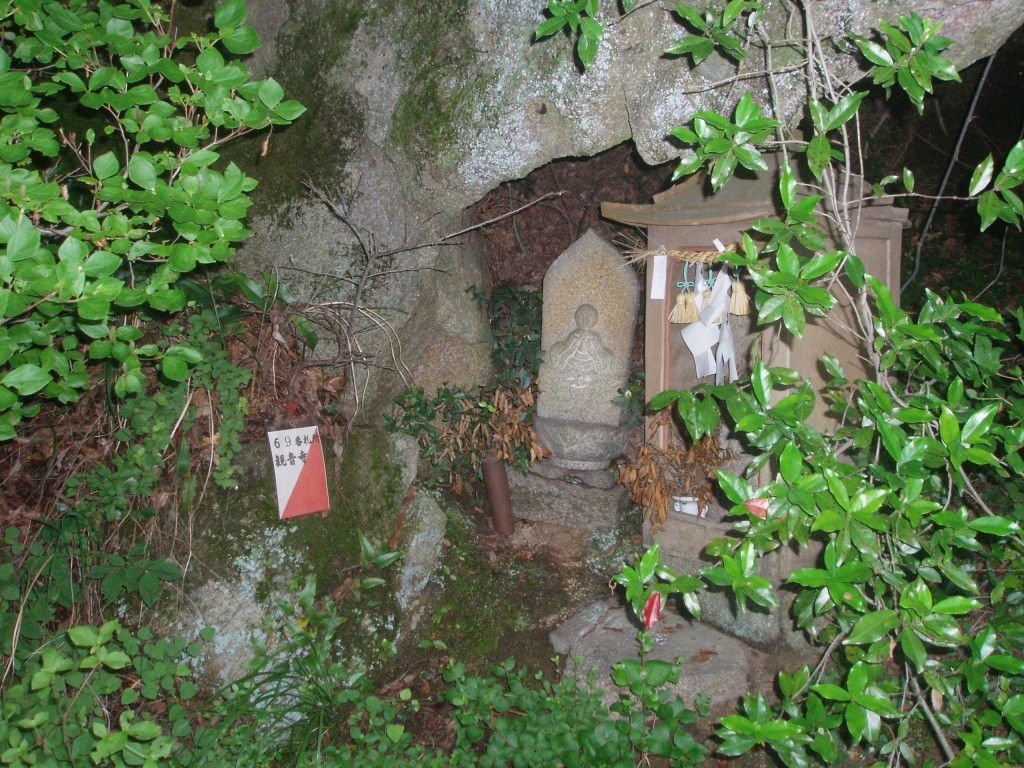
No. 69 on the trail. Each of the 88 shrines has its own distinctive character.
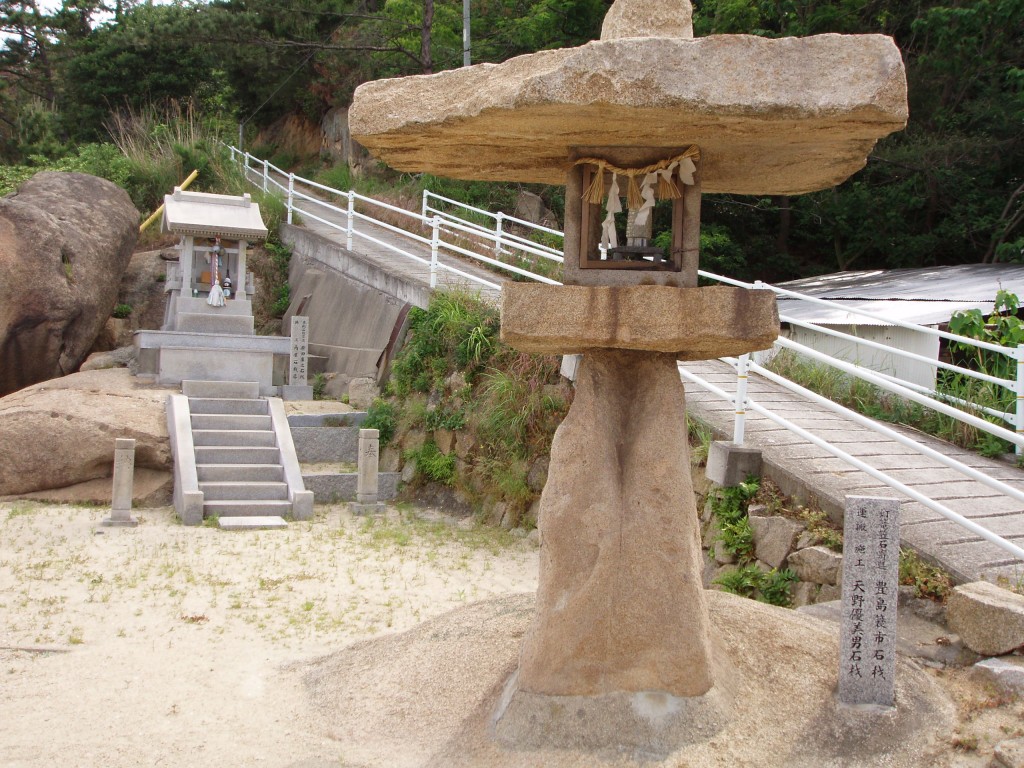
A beach shrine, prompting one to wonder how the traillblazers decided on the apparently haphazard locations. Was it topography, or simply inspiration?
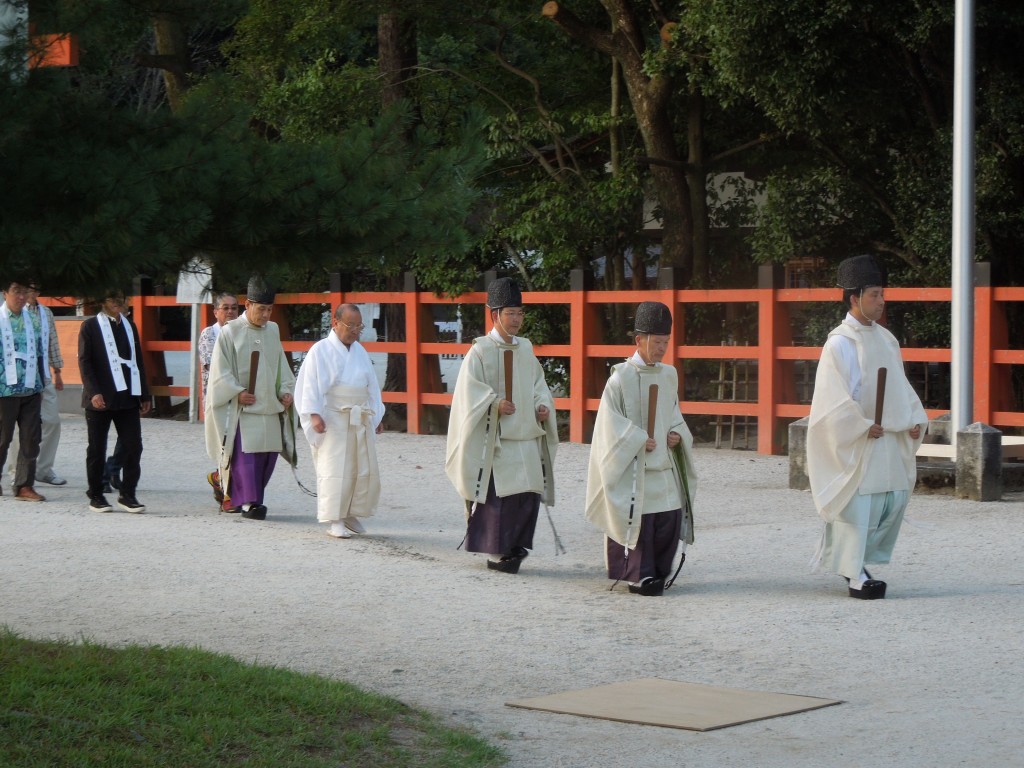
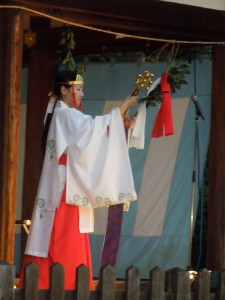
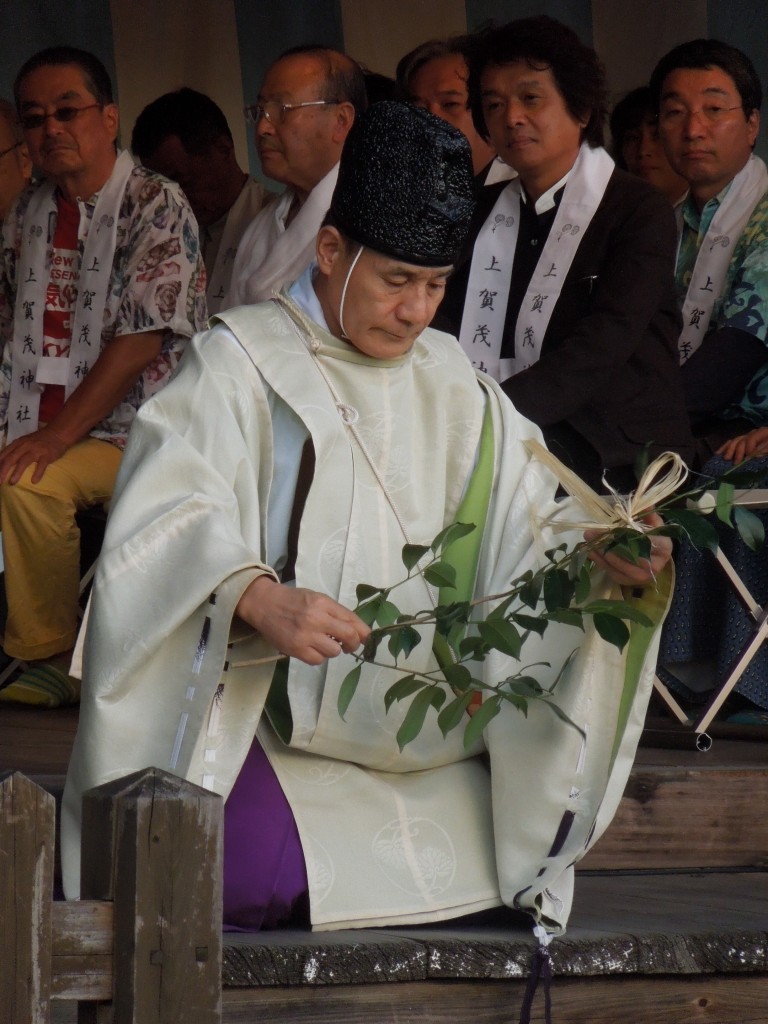
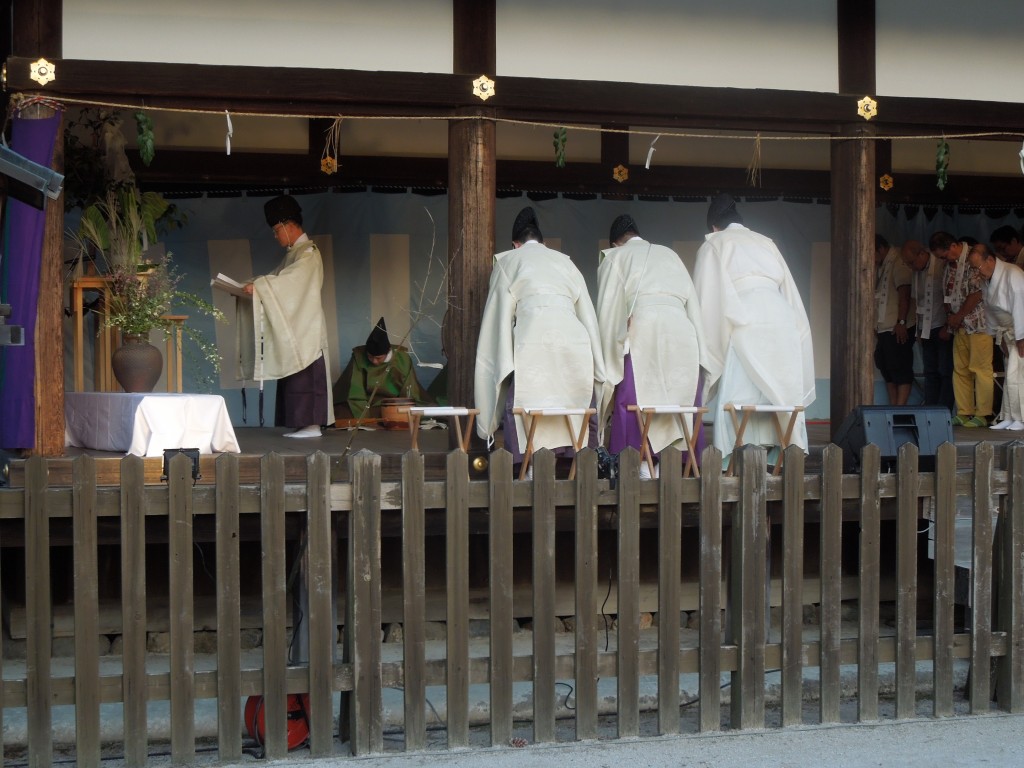
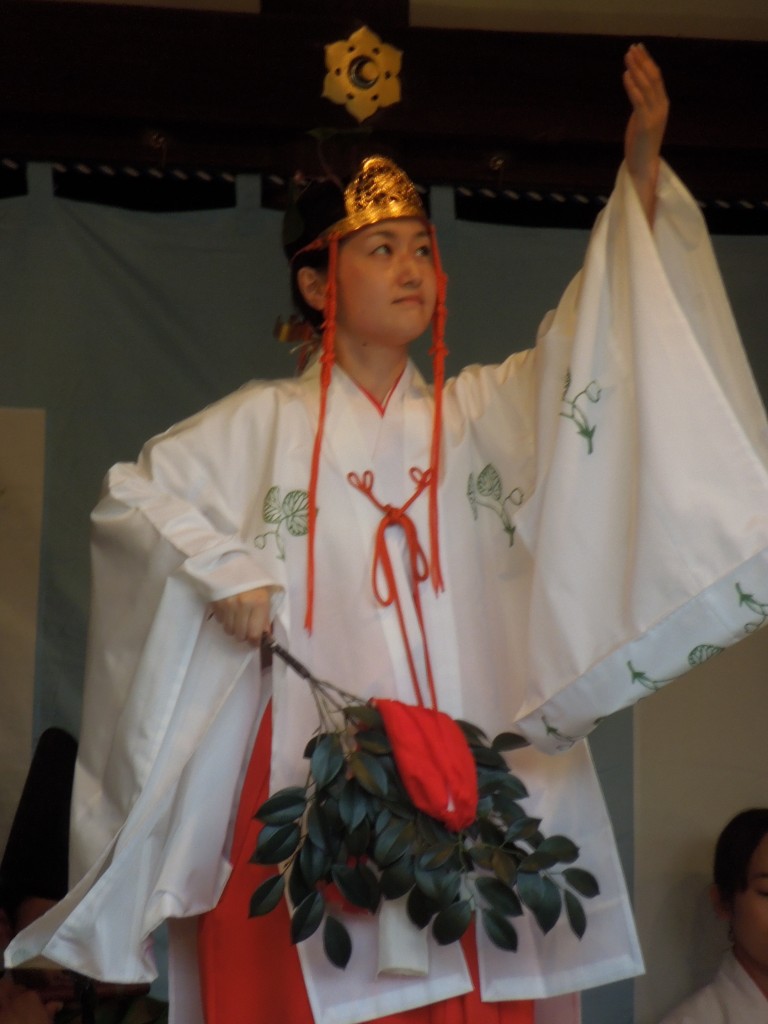
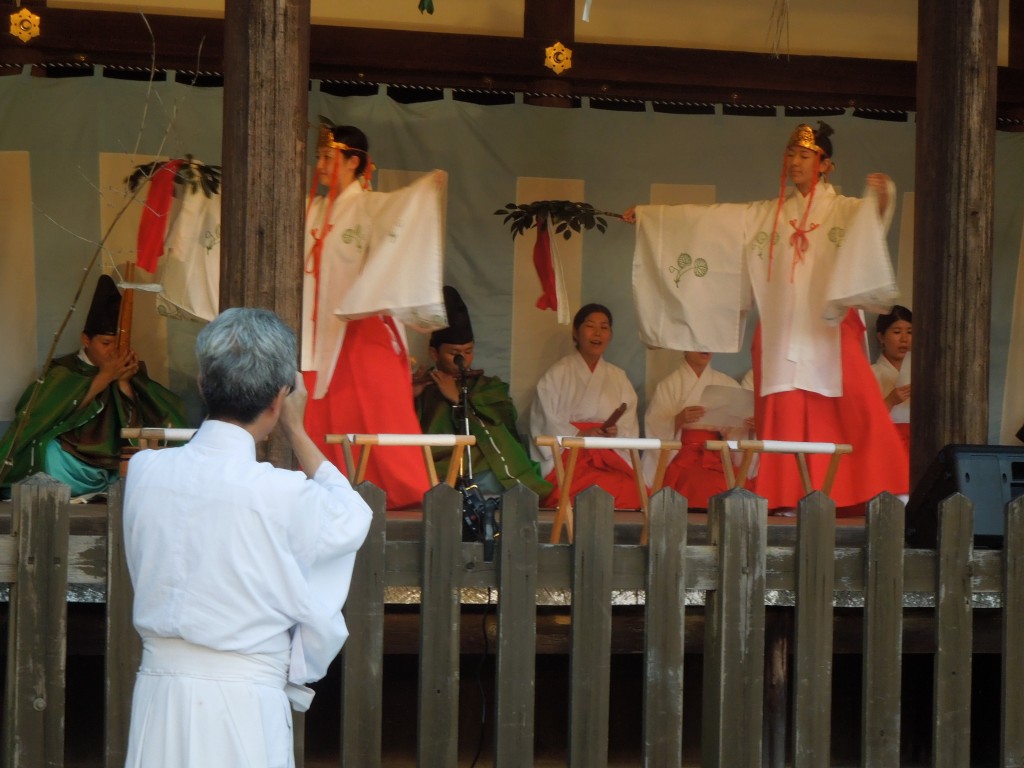
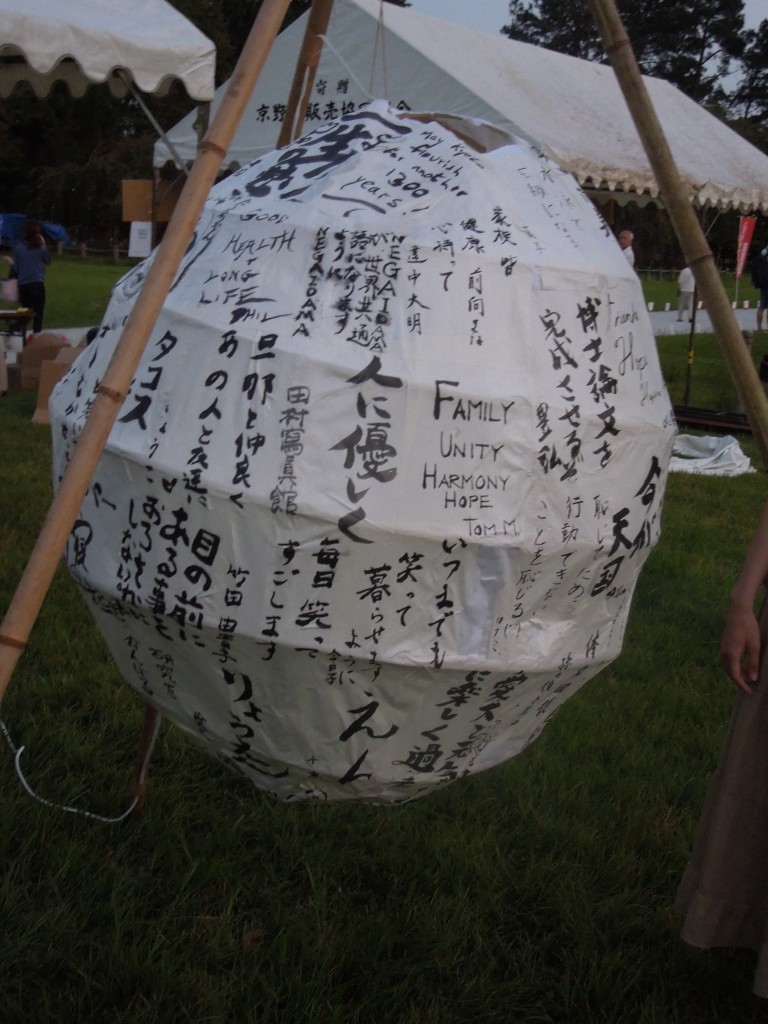







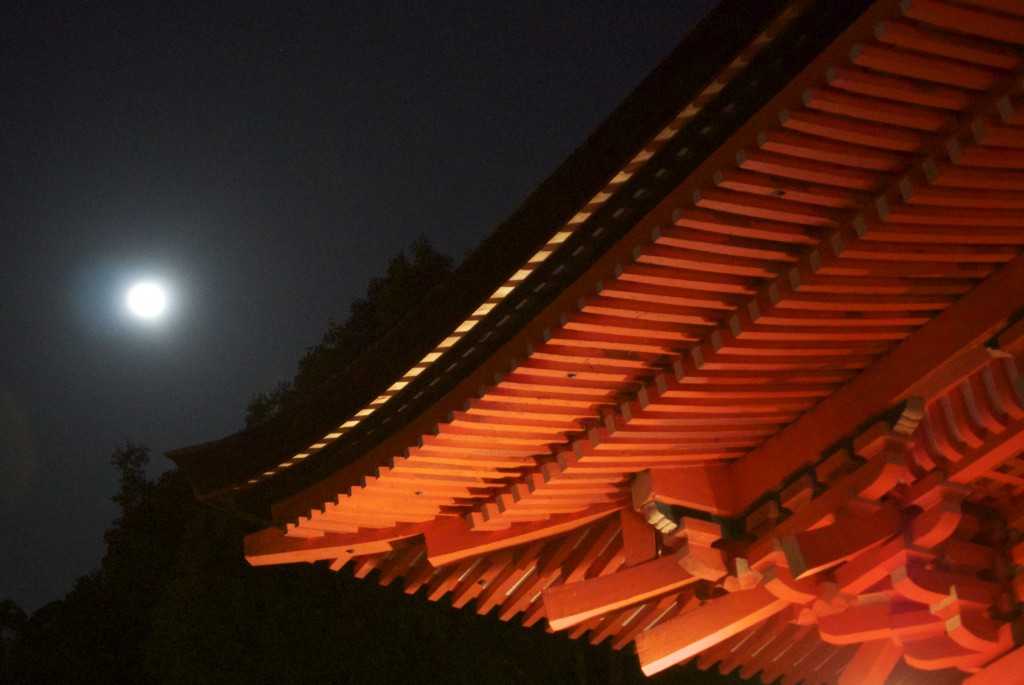
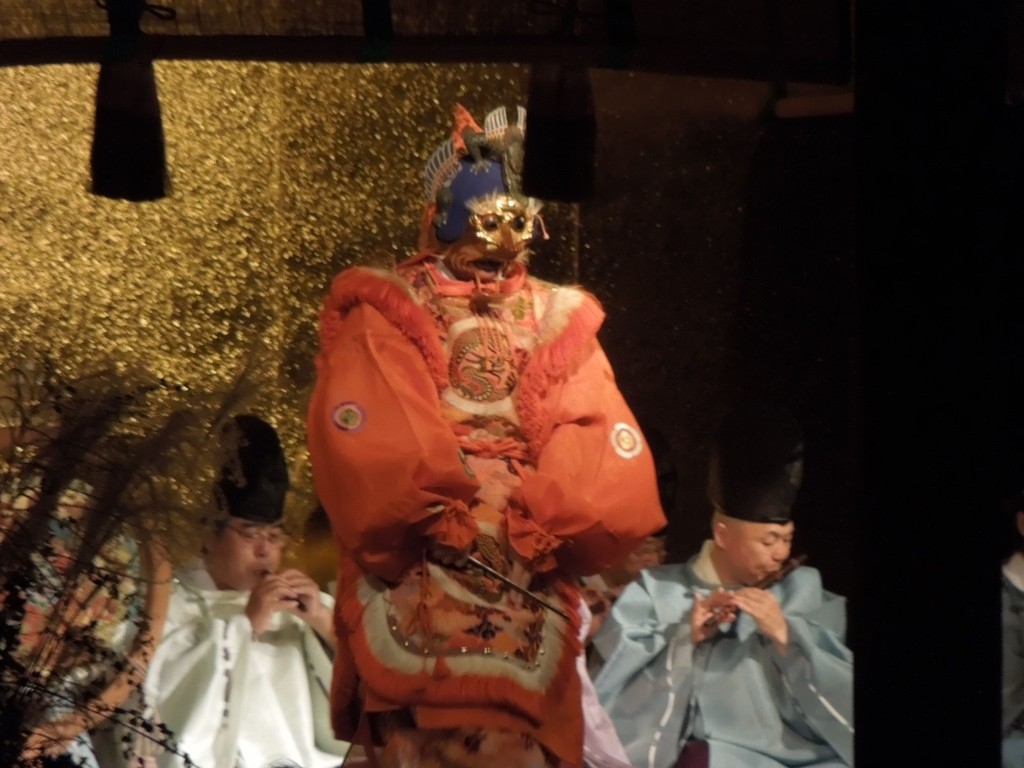
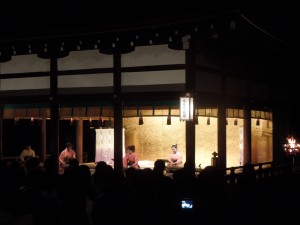
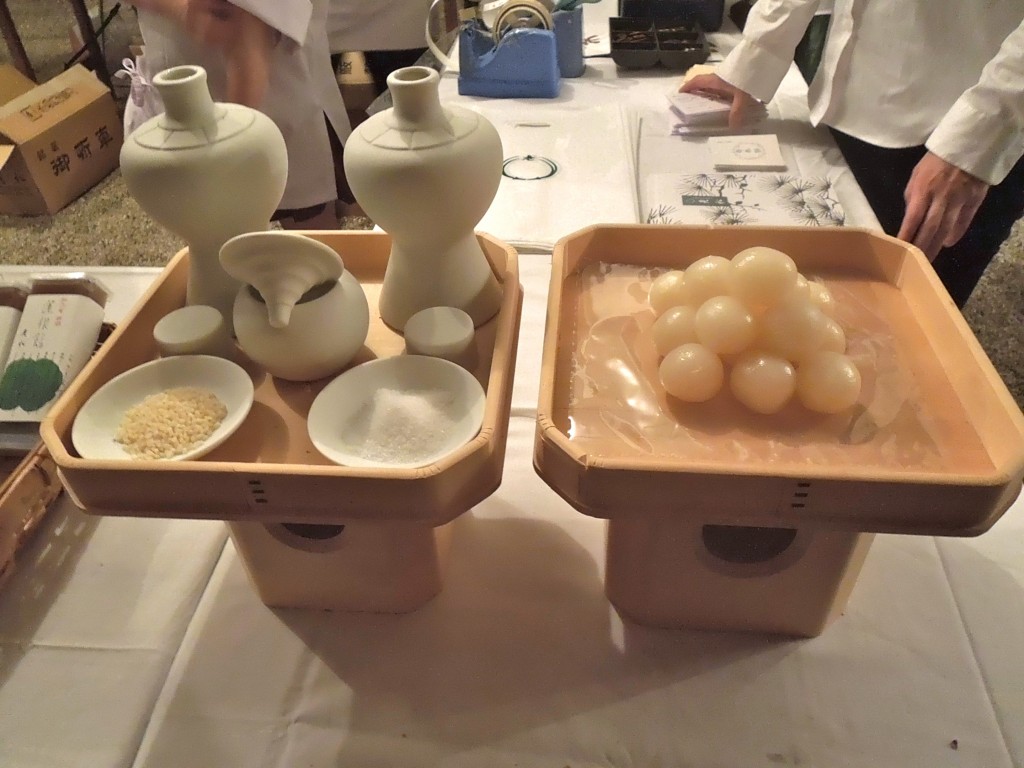
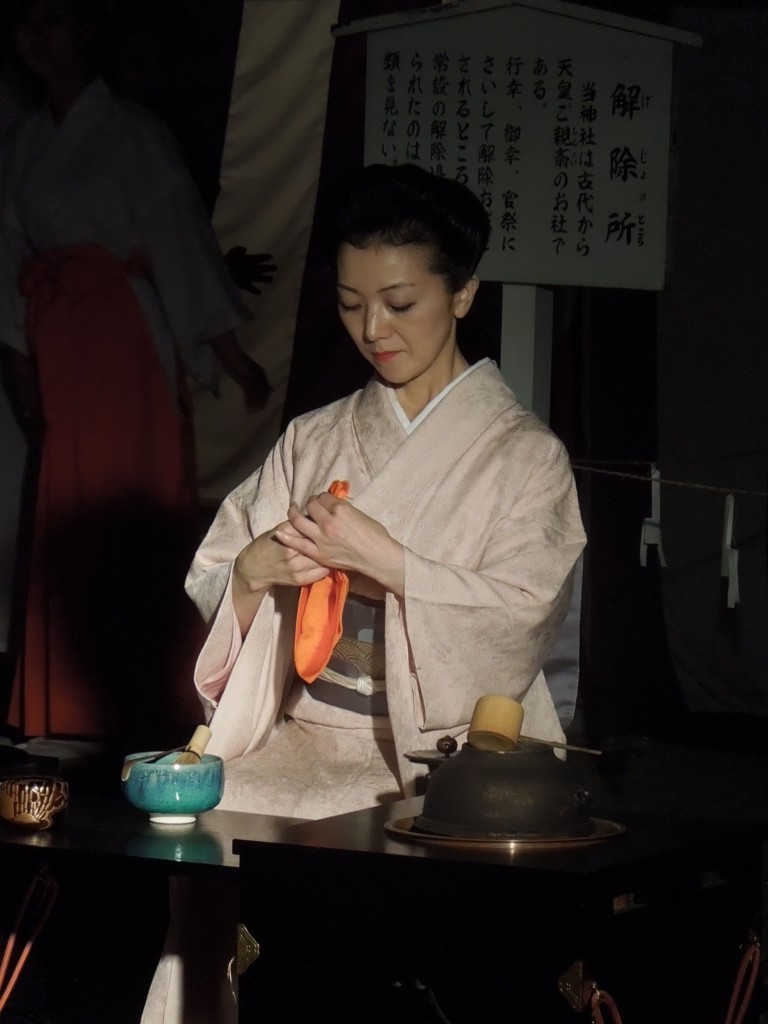
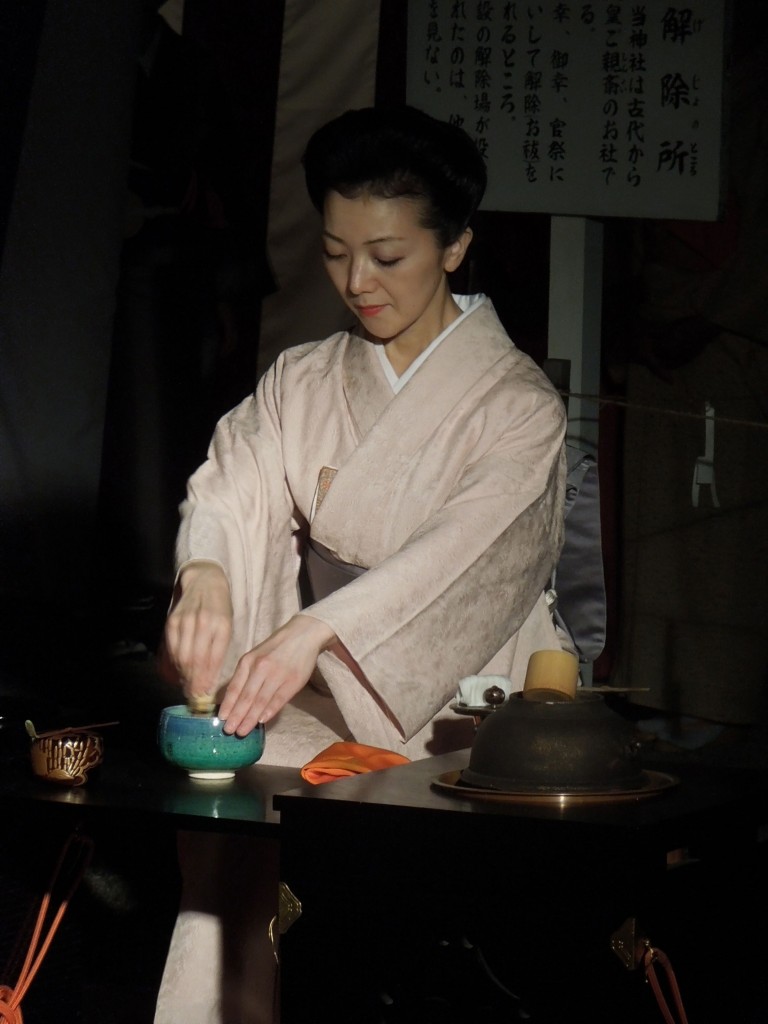
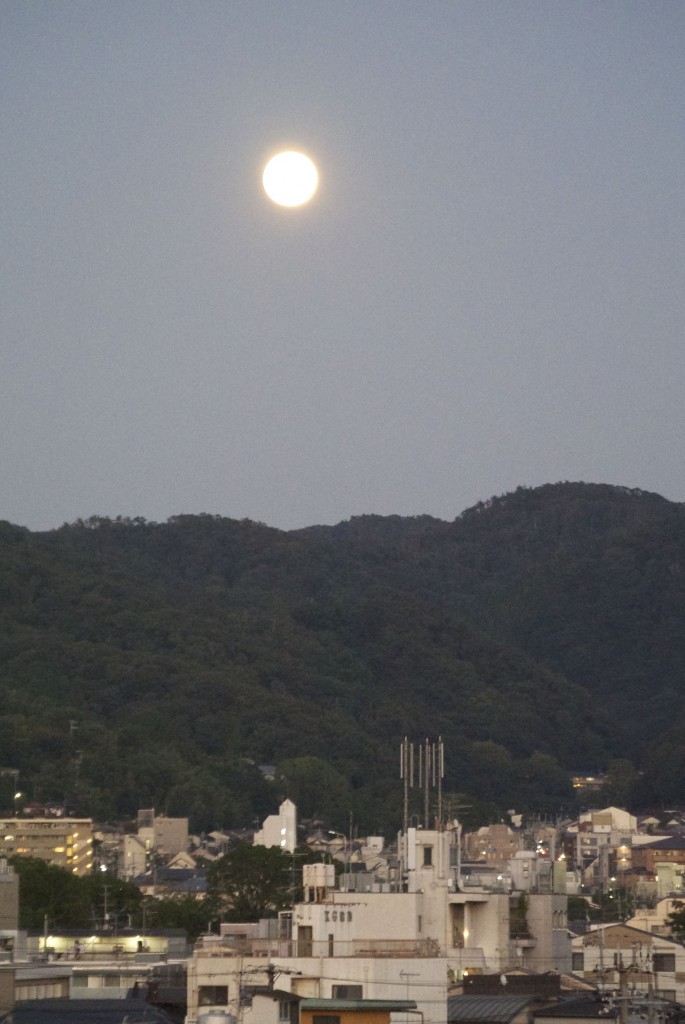
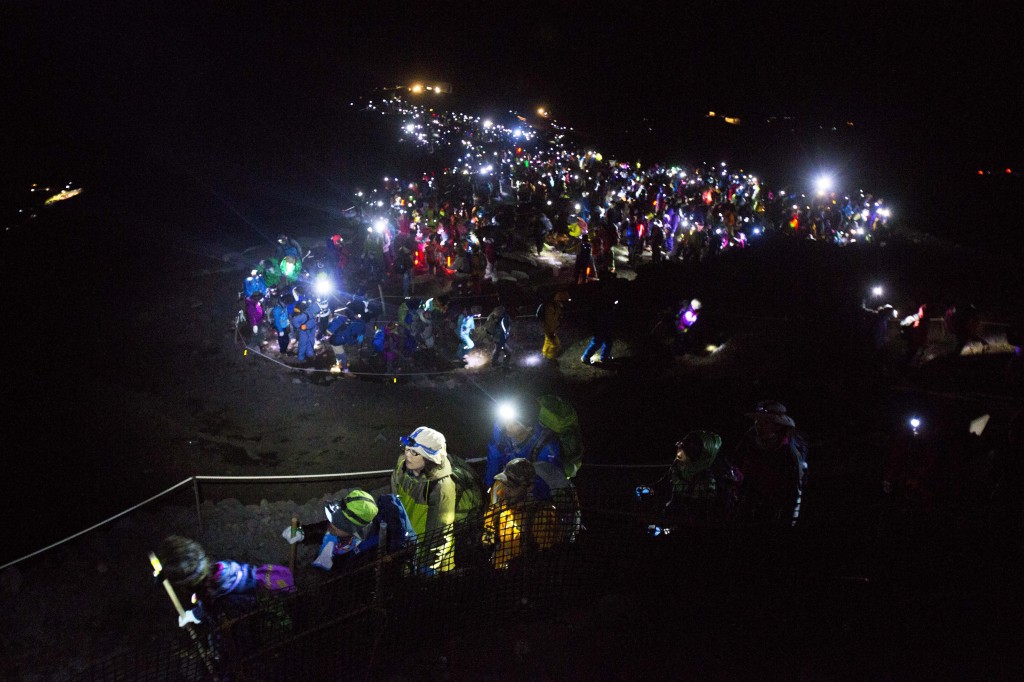




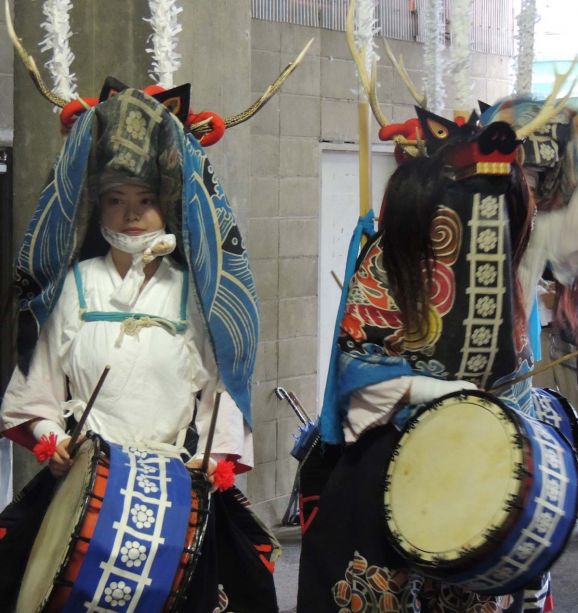
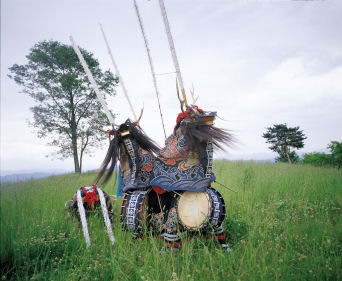
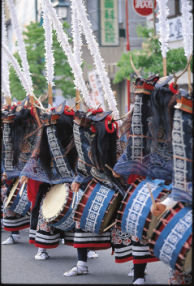 Kasuga School
Kasuga School